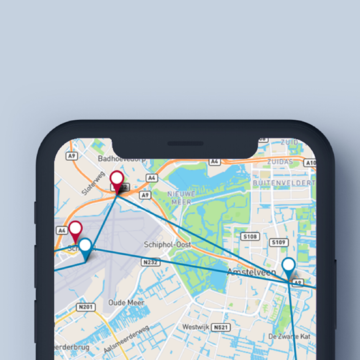In the supply chain particularly during transport, goods could be damaged or compromised because of the movement and long hours. This results in huge financial losses and more importantly the loss of integrity and customer trust.
The warehousing and logistics industries of Australia will be worth more than $180 billion in a few years. The growth is phenomenal because of the rising population and evolving customer demands (e.g. variety, rising consumption, evolving needs and preferences). And, as Australia’s economic landscape still evolves, expect the logistics industries to evolve and accelerate as well. With this evolution comes more frequent and faster movement, which could then translate to more potential damages to goods and supplies.
How important is real-time monitoring in the supply chain
As a result, more focus is being placed now in preventing and minimising the damages to goods, especially while in transport (i.e. we can also think of this as storage but the difference is there’s movement and there are a lot more things that could go wrong). After all, as the volume of goods being delivered and the number of deliveries being made increase, the number and severity of damages to the goods and packages will increase or even magnify. Economies of scale are at work here but along with that the scale of potential damages and mistakes also increases.
To prevent or minimise damages, we start with analysis and monitoring. We trace each step and figure out all potentially vulnerable and hazard points. It’s similar with HACCP (Hazard Analysis and Critical Control Points) wherein the focus is more on the steps and process rather than the end products or results. In other words, this is about prevention (avoiding hazards) rather than inspection of the outputs. We can similarly apply this to the supply chain and make transport yield minimal losses and damages. Instead of focusing on inspection of the received shipment to know if there are damages and defects, the focus is on damage monitoring and prevention. The latter is a more proactive approach and could be more reliable and accurate because visual inspections might not instantly reveal potential problems.
For example, the transport of consumer vehicles and heavy equipment requires protection from impact and monitoring. Even a slight impact (and constant little vibrations) can cascade and result in major impacts and collisions during transport. It’s important to pinpoint the ‘hazard points’ here so that the impacts will be prevented in the first place. When and where do those impacts occur? How and why do they happen? What can we do to prevent them or minimise their effects? Instead of relying on visual inspections (which is conducted once the shipment arrives), we could immediately tell or predict if the shipment has been compromised by those ‘hazard points’. In this case, real-time monitoring is valuable in the prevention and minimisation of damages.
How does real-time monitoring help in damage prevention? Previously, the approach was to know which goods were damaged and have them discarded. Then analysis was done to figure out the root causes (the team then would formulate ways to prevent or minimise future damages). This is a slow approach which could potentially take weeks or months before any tangible action is implemented. Also, this approach is reactive.
In contrast, real-time monitoring is all about being proactive, since we prevent undesirable scenarios in the first place. This way, we instantly do or advise corrective actions long before the shipment arrives. If we could see in real-time the data the impacts our goods receive, we could notify the people responsible for delivery about the anomalies, and make adjustments immediately. Waiting time for meaningful actions is greatly reduced and more importantly, we would know firsthand if the shipment has been compromised. Visual inspection of the goods upon arrival is still important, but now we have more complete information on whether the goods have been compromised or not.
How can we do real-time monitoring?
Focusing equally on the process and outcome can make our supply chain more efficient. This higher level of efficiency is important in staying competitive and controlling the costs, especially as our operations grow. In addition, focus on the process and outcome can minimise the damages to the goods during transport. Mishandling could be prevented because unacceptable impacts will be monitored and prevented.
One way to accomplish this is through the use of ShockWatch’s SpotBot Cellular impact monitoring and tracking system. This system allows real-time impact monitoring and visualisation through a web-based platform. The information is transmitted using cellular technology which does not require a line of sight to a satellite for position or communication. This system can deliver up to 75 days of monitoring (with off-the-shelf lithium batteries) that is more than enough for overseas deliveries. Aside from real-time impact monitoring and visualisation, the SpotBot Cellular also allows clients to monitor unacceptable temperature levels during transport. Clients will receive a notification if the temperature levels during transport fall outside the client-defined temperature range.
Real-time monitoring capabilities can result in higher cost savings and better damage prevention. This can also result in better analysis since we gain more data on the status of our deliveries and shipments. With more relevant data we are able to make more informed decisions. This means that instead of inspecting the outcomes, we are now able to monitor the entire supply chain.
Contact us here today at ShockWatch if your focus is on proactive approaches to damage prevention. We can recommend modern innovative solutions that will make your company stay highly efficient and competitive.


